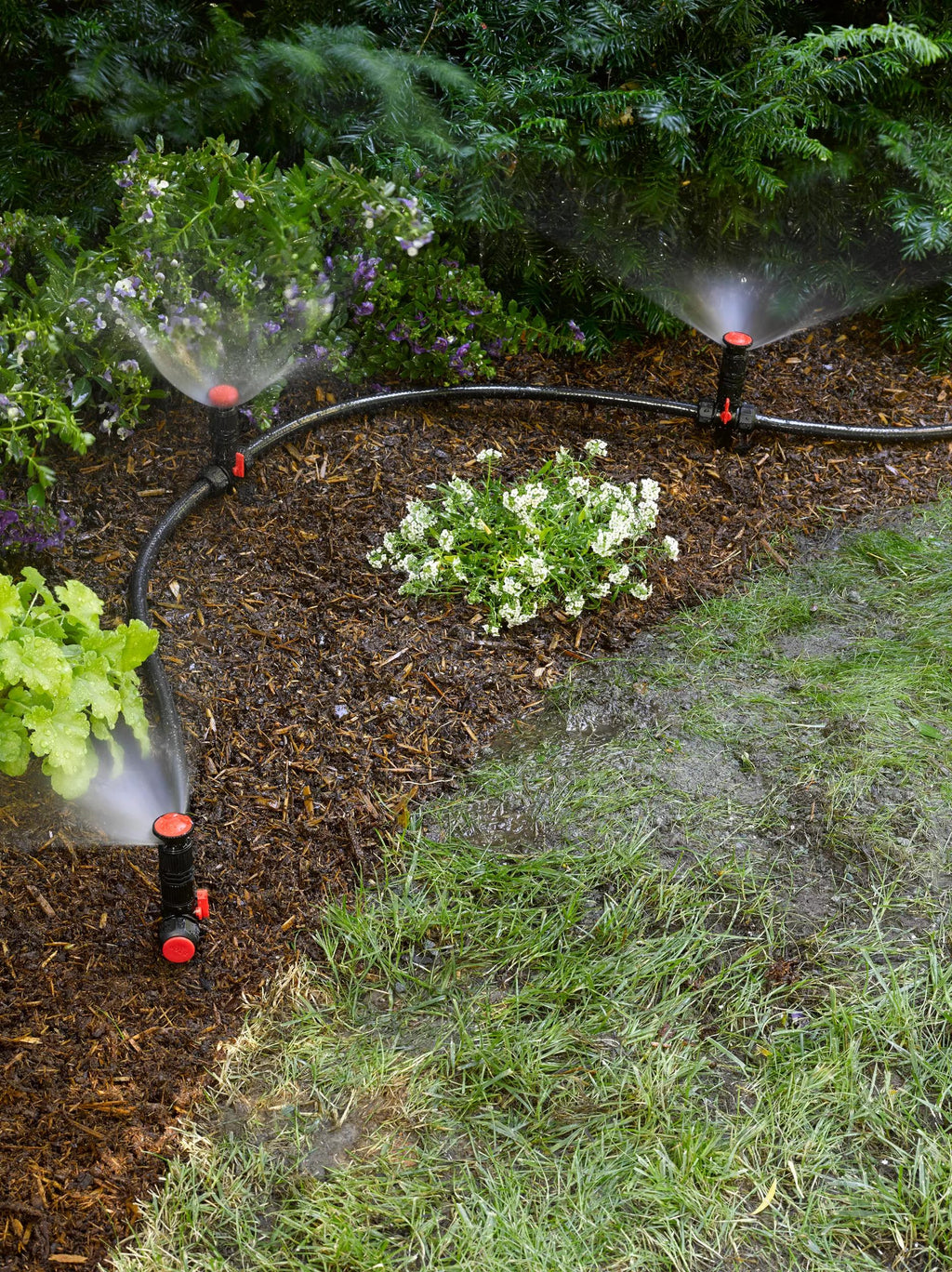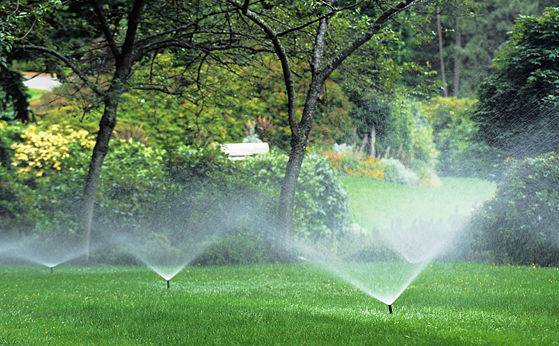Discovering the Most Typical Troubles in Lawn Sprinkler Equipments and Their Repair works
Lawn sprinkler are important for keeping healthy landscapes, yet they often run into numerous issues. Typical problems consist of clogged up nozzles, broken pipelines, and irregular watering patterns. Each of these can markedly impact system performance and water effectiveness. Recognizing these problems and their options is vital for any type of homeowner. The adhering to areas will certainly outline typical obstacles and the necessary repairs to maintain an automatic sprinkler functioning at its best. What follows may amaze those not really prepared for maintenance realities.
Clogged Nozzles and Sprinkler Heads
Clogged nozzles and lawn sprinkler heads are common concerns that can considerably prevent the efficiency of an automatic sprinkler. With time, particles such as dirt, mineral, and algae build-up can gather, obstructing water circulation and leading to irregular protection in the lawn or yard. This can cause particular areas receiving inadequate water, while others might end up being over-saturated.
Normal maintenance is essential to protect against these blockages. Routine checks can recognize any kind of blockages, and cleansing can usually be accomplished with easy tools like a little brush or a toothpick. In some situations, soaking blocked components in vinegar can assist dissolve natural resource.
For serious obstructions, substitute of the nozzle or head may be essential to recover proper function. Dealing with these concerns without delay guarantees that the automatic sprinkler runs successfully, maximizing and maintaining a healthy landscape water use.
Broken Pipes and Leaks
Busted pipelines and leakages can considerably disrupt the capability of an automatic sprinkler. Identifying pipeline damage early is essential to protect against more complications, and understanding repair work techniques can improve the procedure. In addition, executing preventative upkeep suggestions can aid ensure the long life of the system and decrease the probability of future concerns.
Identifying Pipe Damage
How can homeowners efficiently determine pipeline damage in their sprinkler systems? To start, they should frequently evaluate their yards for unusual wet areas or pooling water, which may show a leakage. In addition, homeowners can monitor their water costs for unexplained rises, recommending hidden leakages within the system. Observing the lawn sprinkler heads for uneven spray patterns or insufficient insurance coverage can likewise indicate potential pipe issues. Moreover, paying attention for uncommon noises, such as hissing or gurgling, may show air running away from harmed pipelines. Lastly, carrying out aesthetic inspections of subjected pipelines for cracks or rust can assist identify troubles. By using these techniques, property owners can proactively identify and address pipe damage in their lawn sprinkler systems prior to it leads to extra significant problems.
Repair Techniques Introduction
Attending to pipe damages in a lawn sprinkler needs a systematic strategy to fixings, particularly when managing leaks and breaks. The very first step usually involves locating the damaged area, which can be attained via aesthetic examination or stress screening. Once recognized, the repair service strategy may vary; for tiny leakages, utilizing pipeline sealer or epoxy can effectively secure the affected section. In instances of considerable breaks, eliminating the harmed pipe sector and changing it with brand-new piping, safeguarded with suitable adapters, is recommended. Additionally, ensuring proper alignment and securing joints will aid prevent future problems. After repair services, complete testing of the system is important to confirm that leaks have actually been solved and that the system operates successfully.
Preventative Maintenance Tips
To minimize the threat of busted pipelines and leaks in an automatic sprinkler, routine preventative upkeep is essential. House owners ought to routinely examine the system for noticeable damages, making certain that pipelines and fittings are undamaged. Seasonal adjustments are very important; before wintertime, systems need to be drained to prevent freezing, while spring checks can identify wear from frost or moving dirt. In addition, keeping the area around sprinkler heads free from debris helps prevent blockages that could result in leaks. Regularly testing water pressure can disclose underlying issues, as too much pressure might stress pipelines. Documenting maintenance tasks can assist track performance and identify reoccuring problems, making it less complicated to deal with any type of issues proactively.
Irregular Watering Patterns
Irregular watering patterns can result in stressed out plants and uneven grass, stemming from different causes such as clogged up nozzles or misaligned lawn sprinkler heads. Identifying these problems is essential for effective repair work and ensuring regular water distribution across the landscape. Solutions may entail straightforward maintenance tasks or adjustments to the automatic sprinkler for excellent performance.
Root Causes Of Uneven Watering
When an automatic sprinkler falls short to disperse water equally across a yard, several variables may add to this problem. One common reason is improper lawn sprinkler head positioning, which can result in overlapping or not enough coverage. Furthermore, clogged nozzles can restrict water circulation, resulting in completely dry spots. Variations in water pressure can also influence circulation, as some locations may receive a lot more water than others. Unequal terrain or soil compaction can impact exactly how water permeates the ground, leading to unequal absorption. Ultimately, the age of the lawn sprinkler parts may result in diminished performance, contributing to irregular watering patterns. Recognizing these reasons is crucial for maintaining a reliable sprinkler system and ensuring a healthy and balanced yard.
Solutions for Repairing Issues
Dealing with unequal watering patterns requires a systematic strategy to recognize and fix underlying concerns. Inspecting sprinkler heads for obstructions or damage is important; cleansing or changing them can improve water circulation. Next off, readjusting the automatic sprinkler's stress settings may assist accomplish a more consistent spray. In addition, assessing the design of the sprinklers can reveal locations that require rearranging to ensure insurance coverage consistency. Looking for leakages in pipelines or installations is essential, as leakages can lead to uneven watering. Finally, setting the timer to suit various areas based on plant needs can improve total effectiveness. By carrying out these options, one can successfully restore balanced watering patterns within the landscape.
Timer and Control Concerns
Although a well-functioning timer is important for peak automatic sprinkler efficiency, numerous house owners run into concerns that interrupt their watering schedules - lawn sprinkler repair. Usual issues consist of malfunctioning programs, where timers might not mirror the intended watering times, resulting in over- or under-watering. Furthermore, power outages can reset timers, triggering them to change to skip settings and neglecting the personalized timetables homeowners depend on. Breakdowns can also come from outdated technology; older timers may lack the functions necessary for maximum control, such as rainfall sensors or wise technology combination. Moreover, circuitry problems can prevent signals from getting to the valves, providing the system unusable. Normal maintenance and timely updates can help reduce these concerns. Home owners need to consider consulting experts for troubleshooting to ensure their timers operate properly and efficiently, as proper control is critical for conserving and preserving a healthy and balanced landscape water sources
Automatic Sprinkler Stress Issues
Just how can poor water stress impact a lawn sprinkler's performance? Inadequate water pressure can lead to irregular water distribution, leading to completely dry spots and overwatered locations. This disparity endangers the general health of the landscape, as plants might deal with either drought anxiety or origin rot. Low pressure can additionally hinder the procedure of sprinkler heads, avoiding them from reaching their designated range and coverage.
 Alternatively, excessive stress can create damage to the system, causing leaks or broken elements. Ruptured pipes and malfunctioning lawn sprinkler heads might happen, sustaining costly repair work. Recognizing the root cause of stress concerns is vital; usual culprits include clogged up filters, malfunctioning valves, or even metropolitan supply problems. Regular system checks can assist keep appropriate pressure, making sure a efficient and efficient lawn sprinkler. Correct stress monitoring is important for peak efficiency and durability of the irrigation system.
Alternatively, excessive stress can create damage to the system, causing leaks or broken elements. Ruptured pipes and malfunctioning lawn sprinkler heads might happen, sustaining costly repair work. Recognizing the root cause of stress concerns is vital; usual culprits include clogged up filters, malfunctioning valves, or even metropolitan supply problems. Regular system checks can assist keep appropriate pressure, making sure a efficient and efficient lawn sprinkler. Correct stress monitoring is important for peak efficiency and durability of the irrigation system.Seasonal Maintenance Tips
As the periods modification, implementing regular upkeep for an automatic sprinkler becomes important to guarantee peak performance and durability. Home owners need to start by examining the system before the onset of each period. In the springtime, evaluate for any kind of winter season damage, clean the nozzles, and change the spray patterns to accommodate brand-new development. Throughout the summer, validate that all zones are operating efficiently, keeping track of for any dry spots or overwatering. In the autumn, it is important to prepare the system for wintertime by draining pipes the lines, blowing out the pipes, and insulating any type of revealed elements. Ultimately, a thorough evaluation in the winter can help determine potential problems that might emerge in the springtime. Regular upkeep not only extends the life of the automatic sprinkler yet also promotes a healthy landscape, lowering water waste and ensuring a reliable watering process throughout the year.

Repairing Usual Lawn Sprinkler Issues
What steps should homeowners take when encountered with common sprinkler concerns? They ought to observe the system for visible indications of malfunction, such sprinkler system installation as busted heads or damp spots, suggesting leaks. Next, checking the timer settings and verifying the system is programmed correctly is important, as incorrectly established timers can bring about overwatering or underwatering. Property owners need to likewise inspect the shutoffs for obstructions and validate they close and open effectively.
If the system reveals reduced water stress, it may be because of a blocked filter or a malfunctioning pump, demanding extensive cleaning. Furthermore, property owners should confirm that the watering areas are working separately and not overlapping, which can drainage. If problems continue, consulting a professional might be needed to identify and deal with even more complex issues, verifying the lawn sprinkler runs efficiently and effectively.
Often Asked Questions
How Often Should I Examine My Lawn Sprinkler System?
An automatic sprinkler should be examined at the very least two times a year, preferably in springtime and loss. Routine checks aid determine leakages, blockages, and various other concerns, guaranteeing optimal performance and water performance throughout the periods.
Can I Mount an Automatic Sprinkler Myself?
Yes, a person can install a lawn sprinkler system themselves, supplied they have the required devices, knowledge, and abilities. It is advisable to speak with regional policies and standards to assure appropriate setup and conformity.
What Is the Typical Life Expectancy of a Sprinkler System?
The average life expectancy of a sprinkler system usually varies from 10 to 20 years, depending on the top quality of products, maintenance practices, and ecological problems, which can considerably affect its longevity and general performance. sprinkler system installation.
Are There Eco-Friendly Options for Sprinkler Systems?
Green choices for automatic sprinkler include drip irrigation, rain sensors, and wise controllers. These modern technologies conserve water, reduce runoff, and advertise efficient watering, making them lasting options for ecologically aware house owners looking for reliable watering solutions.
How Do Weather Problems Affect Lawn Sprinkler Efficiency?
Climate problems greatly influence lawn sprinkler efficiency; as an example, excessive warmth can bring about evaporation, while heavy rains may cause oversaturation. Additionally, wind can disrupt water circulation, leading to inefficient watering and uneven protection across landscapes.
Stopped up nozzles and lawn sprinkler heads are typical problems that can significantly impede the performance of a lawn sprinkler system. When a sprinkler system falls short to distribute water evenly throughout a lawn, several aspects may contribute to this concern. A well-functioning timer is crucial for peak lawn sprinkler system efficiency, lots of homeowners run into concerns that interrupt their watering timetables. Just how can insufficient water stress influence a lawn sprinkler system's performance? Regular system checks can aid maintain correct pressure, making certain a reliable and efficient lawn sprinkler system.